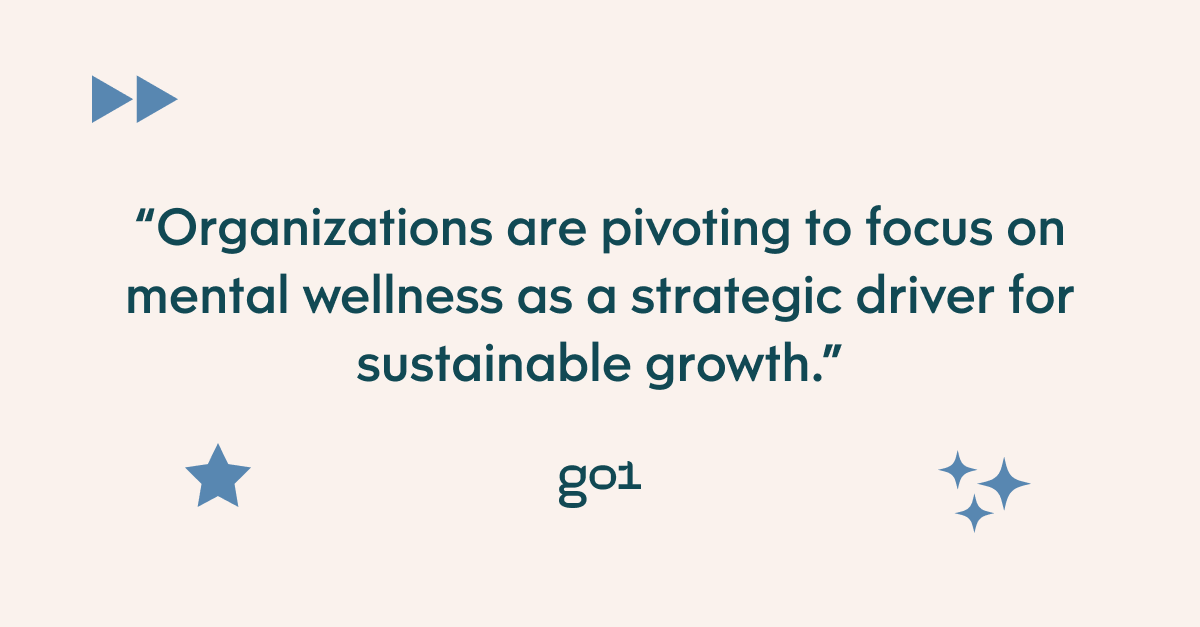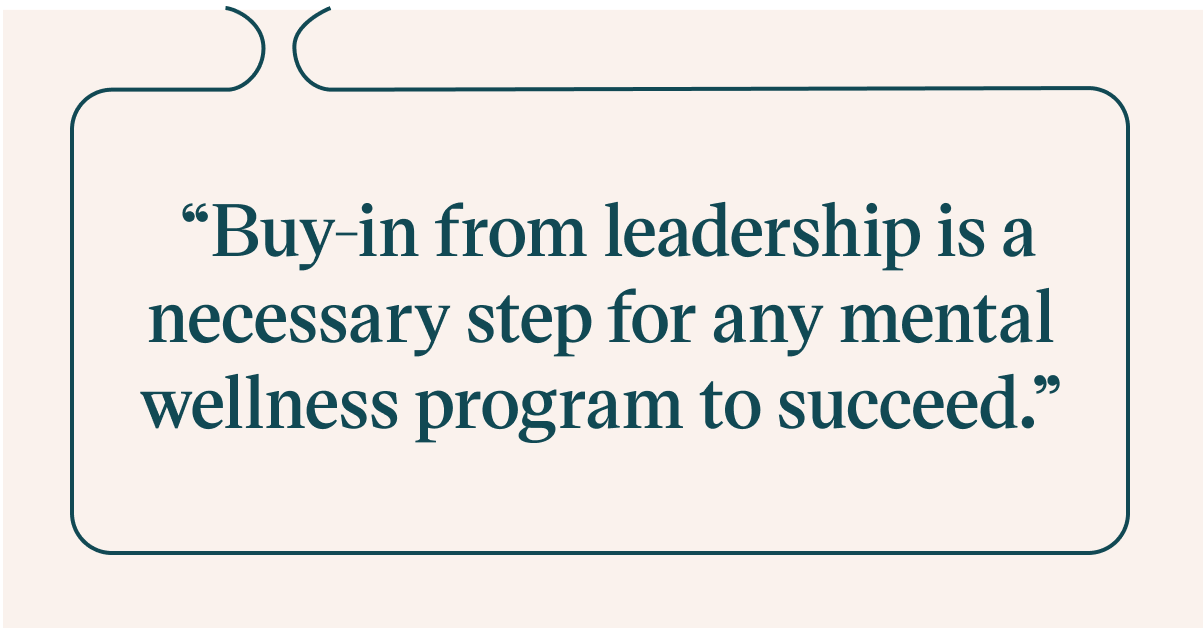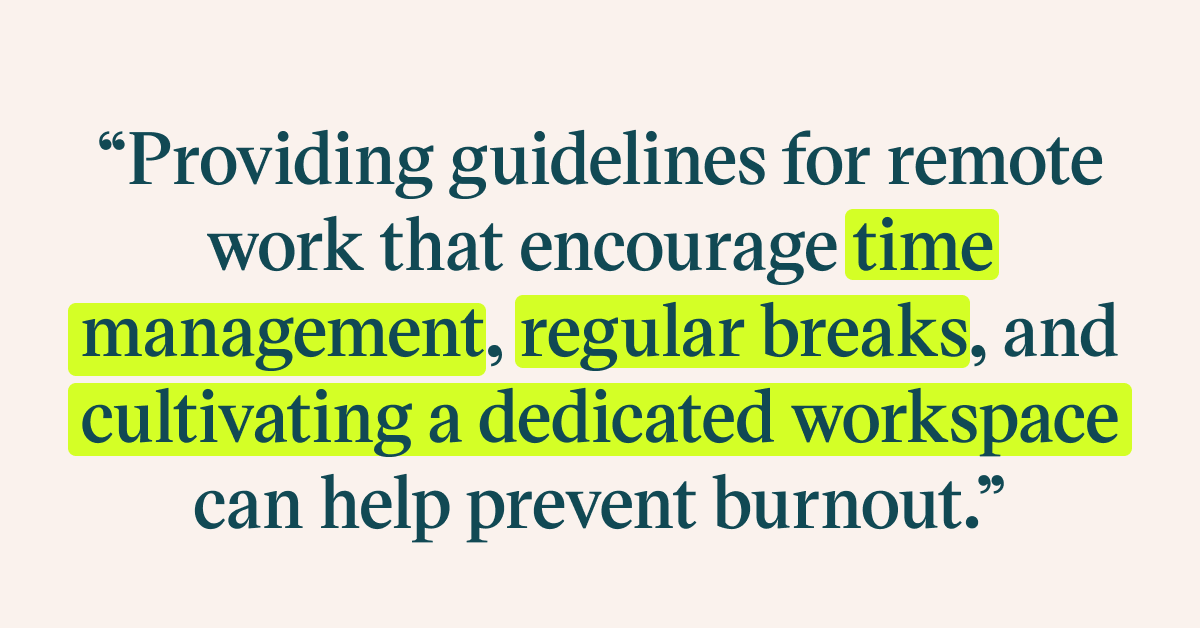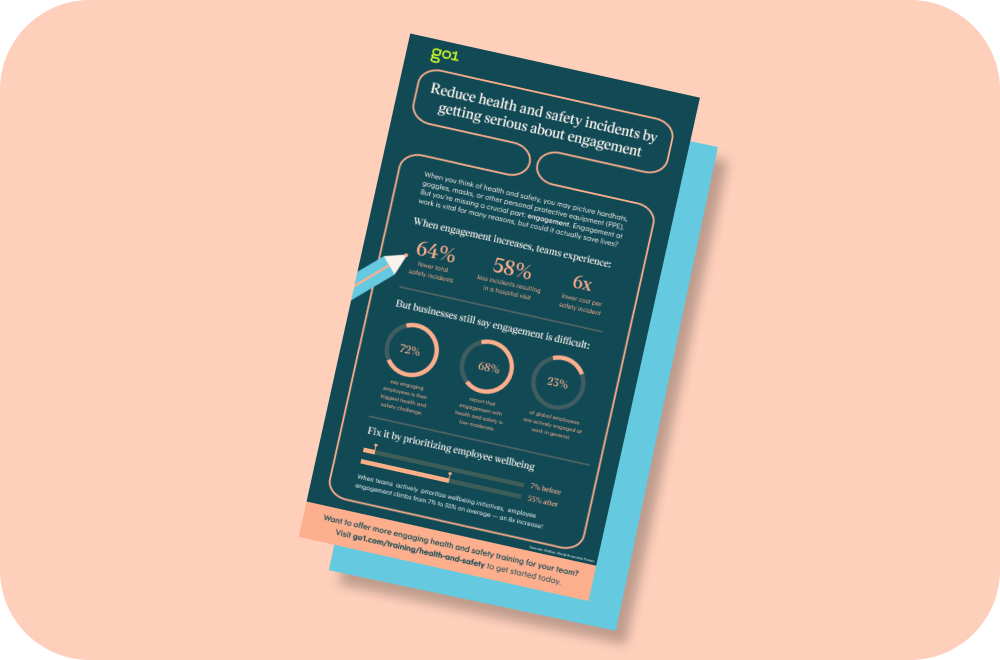
Building a wellness-focused workplace

We’re living in an age where always-on culture is glorified, employees are expected to pull long hours into the night or early morning, and qualities like grit and tenacity are valued over empathy and collaboration. It’s no shock that the relationship between productivity and mental wellness have become particularly strained.
While companies may view productive employees as their key to success, the reality is that the modern work culture's push to continuously increase productivity comes at a high price. Many employees want to perform well at work and continue growing their skills, but an individual can only do so much. As an employee’s list of responsibilities continues to grow, it's inevitable that they'll eventually hit a breaking point, leading to burnout, decreased productivity, and higher attrition rates. Plus, let's face it—a burnt-out employee isn’t likely to spend their time and energy on learning and development.
Forward-thinking organizations are pivoting their focus to championing mental wellness, not only for ethical reasons but also as a strategic driver for sustainable growth and a competitive edge. This focus on mental health isn't simply a fad or a phase—it's the result of a workplace culture that has gone too far and must now self-correct to regain balance.

In this article, we'll unpack the relationship between mental health and productivity, and provide strategies to help your organization foster a supportive environment that values the whole person, leading to a more motivated, engaged, and ultimately productive workforce.
The productivity-wellness conundrum
The link between productivity and mental health is complex. When people are stressed and overworked, they're not at their best, and burnout becomes a real risk—but this doesn’t mean you should stop working toward a more productive workforce altogether. Instead, it's important to prioritize your workforce’s mental well-being so you can form realistic expectations of your employees.
Often, companies treat employee well-being more as a nice-to-have than a need-to-have for their business success. However, there's plenty of evidence showing that happy, mentally healthy employees perform better. In fact, research shows that happy workers are 13% more productive than unhappy workers. Fast Company even concludes that because of this, happiness should be a KPI for all businesses.
So, how can you create a work environment that's good for mental health and simultaneously keeps productivity high? If you're truly committed to making mental wellness a part of company culture, then it can't be an afterthought. It's important to build a structured approach that is both thorough and inclusive. Here are three strategies you can implement within your mental health framework:
Leadership’s commitment and advocacy
Leadership is the backbone of organizational culture. If your organization's leaders don't prioritize a healthy work-life balance for themselves, then it's likely their direct reports won't either, and this attitude will continue to travel throughout the company. It's vital that leadership embodies the values they want their teams to practice. When leaders actively promote and model healthy boundaries, it sets the tone for the rest of the organization, making it easier for employees to prioritize self-care without fear of being stigmatized or penalized.
Buy-in from leadership is a necessary step for any mental wellness program to succeed. Instituting a well-thought-out mental health policy that leadership promotes and advocates for signals to employees that their mental well-being is a priority. This should be backed by clear communication that encourages the use of mental health resources and destigmatizes seeking help.

When we consider leadership’s role in mental well-being, we don’t just mean your organization’s C-suite. A recent study by UKG found that managers have a higher impact on employees’ mental health than doctors or therapists—and that they have the same impact as a spouse or partner! As key role models with significant impact, it’s important that managers are trained to cultivate a supportive relationship with their team by celebrating employee accomplishments and creating a space to openly discuss work challenges and stressors. This shift can help employees feel like their relationship with their manager is an ongoing opportunity for growth, not a constant critique.
Mindfulness practices for daily life
Integrating mindfulness techniques into daily work can have a profound positive impact on stress levels. Mindfulness helps individuals to be fully present and engaged in the task at hand, ultimately leading to better performance. But what does mindfulness look like at work?
Building mental health policies may not be the most exciting task, but implementing mindfulness practices is a great place to get creative and have fun! Consider offering all-company workshops or team sessions to introduce your workforce to various mindfulness techniques, building their resilience to stress and enhancing their ability to focus. You might host a yoga class or breathwork session, or add weekly guided meditations to the calendar.
At Go1, our co-founder Vu Tran, who is also a medical doctor and a fellow of the Royal Australian College of General Practitioners, recently hosted a fireside chat on mental health, and all team members were invited to join. During the session, Vu shared his thoughts on resilience, his frameworks around understanding the basics of mental health, and answered questions about mental wellness. Not only was this an opportunity for employees to learn more about mental health from an expert, but it was also a chance for Go1 leadership to show employees that mental health is a priority for us—and we want our team to prioritize it, too.
Organizational support
Mental health isn't just the individual's responsibility, so make sure you're going beyond individual practices and facilitating a supportive environment that allows mental wellness to thrive.
In a post-pandemic world, remote and hybrid work has become the norm for many employees, and the blurring of work-life boundaries is real. Providing guidelines for remote work that encourage time management, regular breaks, and the cultivation of a dedicated workspace can help prevent burnout.

Flexibility is also key, as flexible working hours and locations can empower employees to structure their workday in a way that best supports their personal responsibilities and mental health needs. A survey from Gartner found that 43% of respondents said flexible working hours helped them achieve greater productivity. Providing flexibility and access to mental health resources such as counseling services or employee assistance programs can help employees feel supported and cared for.
Adapting to change
Our collective knowledge about mental health is constantly evolving, and just like we expect employees to adapt to change, organizations should also adapt to meet the changing needs of their workforce. By adopting a holistic approach that looks at both individual and organizational factors, companies can create a work environment that nurtures the well-being and success of their most valuable asset—their employees.
Strategically investing in mental wellness pays off in employee satisfaction, commitment, and performance. It's time to shift the paradigm from a productivity-at-all-costs mentality to a sustainable, wellness-focused approach that benefits everyone.



